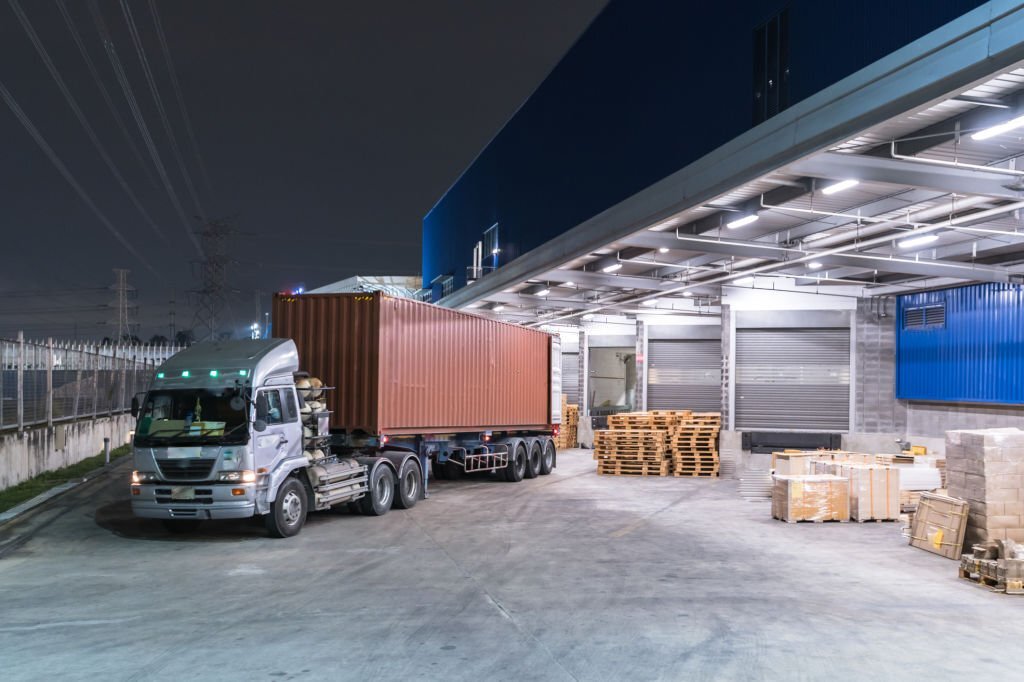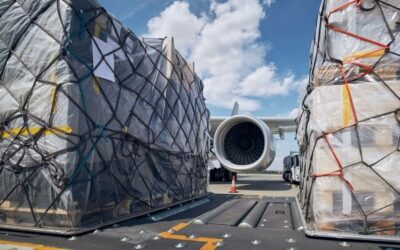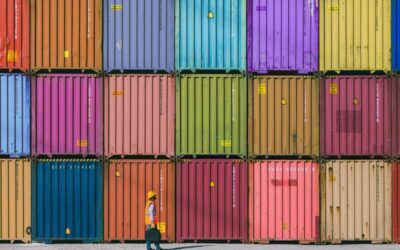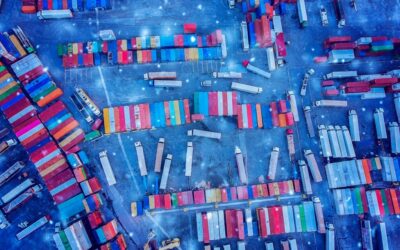Import Customs Clearance – Every Thing You Need to Know
Table of Contents
Introduction to article
With no standard international model, it can be challenging to get the hang of import customs procedures as they vary from one country to another. Moreover, even a single mistake in the customs procedure can cost you a lot of money.
But you don’t need to worry, because if you are planning to import something, you have come to the right place. We have prepared a guide to give you a general understanding of the entire procedure.
First, let’s start from the basics and understand what the term customs clearance means.
Customs clearance:
Customs Clearance can easily be defined as the process of taking goods to the customs authorities to facilitate their movement across borders. It involves the following things:
- Planning and submitting documentation
- Representation of customer through
- Customs assessments
- Customs evaluations
- Submission of duties and payments
All in all, customs clearance is a compulsory process of securing consent from a nation’s administering bodies, through its customs authority to import or export goods by sea, air or road.
You must be wondering if the customs clearance process is the same for every shipment. Let’s find out.
Customs Clearance procedure based on the types of shipment:
There are basically three types of shipments and the customs clearance procedure can be different for each type of shipment.
Transshipment:
For transshipment, you don’t have to pay any customs duty or tax at the port or to another customs station.
For moving this type of shipment, you would need a transshipment license, which is prepared by the carrier. An authorized representative of the carrier submits the license to the customs authorities at the port of entry and at the destination.
Shipment in transit:
For the freight marked as ‘shipment in transit’ entering the port, you have to submit an RIT document. This document suspends the customs duties or taxes temporarily. Moreover, whoever files the RIT is also responsible for verifying to customs that the products have reached the destination.
Local Shipments:
To boost business and improve economic ties, some countries make local free trade agreements, allowing people to do business freely without having to pay customs duties or tariffs.
To benefit from such agreements, a certificate of origin needs to be presented to the customs authorities verifying the location of the goods being imported from.
Without any further ado, let’s find out everything about the import customs clearance.
What is import customs clearance?
In international business, the seller completes all the export procedures, and the buyer is responsible for the import customs clearance. Before the cargo can leave, export clearance is required, and after the shipment arrives at the destination, import clearance is needed for the load to be delivered to the recipient.
Regarding customs clearance, the procedure for export and import clearance is fundamentally the same. But importing materials and items will include evaluating the products and payment of import duties and taxes.
Each international shipment must meet the quota of import customs clearance in a specific country and carefully follow each step to avoid any inconvenience or penalty.
You must be thinking why the procedure is changed for different countries and what affects it. Here’s your answer:
What really determines the import customs procedures?
The import clearance process usually depends on the following:
- The guidelines set up in the nation of import
- The type of products being shipped
- Any trade pact or free trade agreement that exists between the trading countries
- The level of technological advancement in the land of import
It is essential to get familiar with the country-specific customs procedures and how they apply to the importing product.
What does import customs clearance mean?
Making a long story short, the necessary customs procedure to complete for importing an item into a country is known as import customs clearance.
What the customs officer would do is to
- Check whether any duties and taxes are applicable to your shipment based on the type and worth of the importing country’s products and laws and if they are paid or not.
- Look at your documents to examine the shipment details through a commercial invoice. It is a mandatory document for all shipments that displays both the transporter and the beneficiary’s contact data, export data, product information, total worth and transportation details.
I can almost hear you thinking ‘What information does a customs officer look for in the documents?’
Information required in the import customs clearance:
Usually, the following information is required for customs clearance:
- Name of the importer
- Details of goods
- Duty and tax information of the importer
- The point of origin and destination
- Medium of transport
- No. of bundles, gross and net weight, volume.
- Payable duties
The entry of accurate information related to the business, inventory, packing list, cargo worth etc. is important as it influences the duties and customs charges at the ports and evaluates your cargo’s danger.
By and large, governments require a type of import statement. Based on the country and the nature of good, additional documentation may be required, for example
- Health certificate
- Country of origin
- Consulate document
Payment of the applicable import taxes and duties regularly goes with customs clearance. Generally, the import customs clearance can be initiated before the arrival of goods in the destination country, if all the documents are ready.
Before moving forward, there are certain things you need to be careful about at this point.
What to look out for?
Now this is important. What you should avoid at all costs is entering inaccurate information in documents. Why is that?
Because in case of non-compliance, which can either result from negligence or intentional scam, you can face huge problems including delays and storage fees, more fines, destruction or return of goods.
These are some serious consequences.
How long does it take for the import clearance process to complete?
Preparation is the key here. Why does this work? If you have all the necessary documents and know about the taxes and duties, the process of customs clearance will be smooth. After it’s confirmed that taxes and duties have been paid, the shipment is released by the customs authorities and is ready for delivery.
Moreover, many countries offer online services for submitting customs entries, leading to the clearance of goods in just 24 hours. The process’s duration can increase if the customs officers have questions and demand extra documentation or evaluation of the products.
Steps in Import Customs Clearance:
The important steps involved in import customs clearance are as follows:
- You need to acquire the following documents
- An import business number whenever needed for the nation of import.
- Certificate of origin of the products you are importing
- An import license or permit, if necessary, along with other documents
- Ensure your products are not included in the restricted item list in the importing country
- Find the Harmonized System Codes for the items you are bringing in.
- File for an import declaration which you can do manually or electronically.
- Wait for the declaration approval notification
- Pay the taxes and duties
If there is no problem with the shipment documents and you have paid the tax and duties, customs will release the shipment in a few hours.
Starting from the documents, let’s dive deeper to understand each step-in detail.
What are the documents required for import customs clearance?
The import customs clearance fundamentally requires the following documentation:
- Commercial invoice
- Packing list
- Bill of lading
You may be asked to submit additional documents depending on the kind of products you are importing and the country you are importing to.
All the documents required for import customs clearance are discussed below.
Commercial Invoice:
This is the prime document in any business deal as it validates the trade between the importer and exporter. The commercial invoice helps the customs officer determine the value of goods and calculate duties and taxes.
Some countries use the Pro forma invoice to calculate the import taxes and duties, while others separate the commercial invoice. Customs authorities can question the rates applied, and if there is a discrepancy between the charged rate and international market rate, then you may face problems.
It gives information about
- Complete information about the importer and exporter including
- Name and contact information of the trading organization
- Their tax identification numbers
- Total charges on the invoice and the bank account information of the trading parties
- Complete information about the freight including,
- Name and descriptions of the products
- Unit price and HS codes of the products being sold
- Selling price
- Packaging cost
- Weight or volume of the goods
- Freight insurance
- Complete information regarding the deal between the trading parties including,
- Conditions under which the transaction is happening
- Invoice number and date
- Agreed incoterms
- terms of delivery and payment
Packaging list
The exporter has to provide this list which includes all the details regarding the products mentioned in the commercial invoice. It shows all the items you are importing so the transportation companies and the customs authorities know what’s in the shipment.
It is also important for freight forwarders as they need it to create the booking and issue the Bill of Lading. The packing list is displayed outside each container for convenience.
- Number of packages
- Type of packaging e.g., box, carton, etc.
- Dimensions
- Gross and net weight of each package
- Volume
- The packaging marks
Bill of Lading:
The Bill of Lading, or Airway Bill (for air cargo) and ‘CMR’ (for shipments by road), is issued by the carrier organization and is submitted along with the commercial invoice and packing list to customs for clearance.
It serves as a contract between the importer and exporter. This document acts as the shipping receipt and verifies the transport of goods at the destination port. It includes information regarding
- Type of products
- Quantity of products
The shipper, carrier, and receiver must sign the document. Moreover, nobody can edit the information on the Bill of Lading as the original document needs to be submitted to the customs agent.
So, you must enter everything carefully to avoid any problem in future.
Bill of Entry
Bill of entry is one of the significant and legal import documents for import customs clearance which importer or Custom Clearance Agent (CHA) submits within the first 30 days of the arrival of the shipment.
Managed by the Reserve Bank and Customs office, bill of entry marks the complete outward remittance of a nation. After completing import customs procedures, a ‘pass out the order’ is issued under the bill of entry.
Import License
You may have to submit an import license for customs clearance for specific products, which you can’t freely import in the country. Under specific government laws, this license can be necessary for bringing in specific goods.
Insurance certificate
Insurance certificate is a supporting certificate detailing the policy and terms with which the cargo is shipped. With the help of this certificate, the customs authorities verify whether the selling price has insurance or not to assess the import duty.
Letter of credit
The importer’s bank issues it. This is one of the documents necessary for import customs clearance. It includes all the details regarding the terms and conditions of the sales contract and states that the importer will pay the amount on time.
The document helps the customs authorities to value the shipment. In case the payment is not completed then the bank will be obligatory to cover the charges. Other payment methods include:
- Advance payment
- Open account (O/A)
- Documentary collection (D/C)
A technical writeup
A technical writeup of imported products is required for the import clearance of specific products to determine the exact market value. For instance, for importing machinery, a technical write-up detailing its capacity, features and usage can be submitted alongside the other important documents.
Industrial License
An industrial permit may be a prerequisite for importing specific goods if an importer wants any exemption or concession in duty. You can submit a copy to the customs clearance.
Sometimes, small shipments can be absolved from the requirement for proper traditional clearance, and you may be excused from making formal customs declaration and paying taxes.
Certificate of Origin:
As a result of bilateral or multilateral agreements between nations, importers can enjoy import duty concessions. The importer needs to present the state of origin, proving that the products are being imported from a member country.
RCMC
To get the import duty exemption from the government on specific products, presenting the RCMC with customs agents is necessary for import clearance.
Test report
To recognize products’ nature, the customs authorities may check samples of the imported goods and send them for testing to government-approved labs. The concerned customs officials can finish appraisal of such products, exclusively after acquiring such a test report.
GATT/DGFT affirmation.
According to the Government rules, every importer has to file a GATT and DGFT declaration while completing customs clearance procedures for imports. An importer must record GATT announcement according to the terms of the General Agreement on Tariff and Trade.
Health Certificates
Health Certificate is pertinent just when you are importing food items. The record guarantees that the food contained in the shipment is good for consumption by people and has been checked to satisfy all health guidelines. This declaration is given by approved legislative associations from where the shipment begins.
That’s a lot to take in, but bear with me because the next part is important.
How much cost is involved to clear import customs clearance?
There are mainly two parts of the import customs clearance charges. The first part includes the
- Customs clearance fee
- The fee to plan and present the customs entry.
The standard rate for import customs clearance cost is around 50 dollars. But mainly the cost is determined by the type of products you are bringing in and the import country. You can get a free quote here
The second part comprises the duties and taxes. The customs broker usually calculates these. These charges may be fixed or ad valorem. The ad valorem charges are usually some percentages of the value or worth of the products and shipping charges. You have to submit the duties and taxes to the customs authorities. The taxes vary from product to product and country to country.
Custom inspection charges are highly unpredictable and may apply if the customs agents subject your shipment to a concentrated test.
If you have hired a customs broker, the cost may depend on whom you choose and what services you get. For example, various expenses, such as business, storage, and late payment charges, may apply, making it difficult to predict the total amount.
What happens after the import customs clearance is completed?
As discussed above, to hear the words “customs clearance process is complete” a series of things need to be done.
For an import shipment, customs clearance implies that the shipment has been investigated by customs and was either discovered qualified for passage into the country and ready for delivery or was discovered ineligible and seized or returned to the exporter. If it’s good to go then the products are prepared for collection and delivery.
But what happens if they are not cleared?
What to do if goods stuck in import custom clearance?
There are numerous reasons why a shipment may be stuck at customs; these reasons can vary in seriousness from high to low. This thing can cause huge problems for the importer as it can lead to
- Customer dissatisfaction
- Harm to the reputation
- Additional expenses
- Revenue loss.
So, for what reason are your products stuck in Customs? Let me walk you through some of the most common reasons:
Incomplete or inaccurate information in the commercial invoice
The most common reason for the shipment holdup is often incomplete or inaccurate information. You need to make sure that the commercial invoice has all the required information that the customs agent needs to avoid any issue.
Without the important information on the commercial invoice, it wouldn’t be clear to the customs authorities what you are importing into the nation and shipment will be put on hold until they clear the matter.
Wrong HS Code or ECCN Numbers
With the help of ECCN and HS Code, customs authorities determine the product and calculate the duties and taxes that are applicable. If the information is incorrect or missing, they may seize your items.
Awaiting valuation of the cargo
The customs value is the value of goods calculated by the customer that determines the import duty and tax. If you are importing goods with a value that the customs authorities are not satisfied with, the shipment could get stuck. If it’s found to be higher than declared, then you may have to pay extra charges.
The consignee doesn’t list as the importer
An Importer of Record guarantees that products are imported as per the customs laws and regulations of the importing country and completes all the documents and the payment of duties and taxes. If the consignee refuses to enlist as the importer, the shipment will be seized or sent back. So, it is necessary to understand the process fully.
Other reasons could be
- Incorrect number of packages on the commercial invoice
- Missing import documentation
So, what is advised to do about it?
How to clear goods that are stuck in customs?
Whatever the reasons, these basic tips will assist you in getting your products away from issues with customs.
- You can contact your 3PL supplier to get assistance in investigating the issue.
- You can contact your carrier and with your tracking number, you would be able to track your shipment and know about the issue.
- Check with your carrier and see if there are any unpaid taxes or duties.
- If there’s nothing wrong, the next step is to contact your shipper to provide any additional details or paperwork.
How QAFILA can Help in Import Custom Clearance?
International shipping is a complex process with multiple documentation requirements and long procedures. With Qafila, you don’t have to do it alone. We have a team of experts offering trade solutions that can make the entire process of transporting goods smooth.
Along with the trade solutions, we make the entire process digitized. You can track your cargo anytime, until your order has been completed.
If you are interested to get more details, contact us. Our experts are happy to help!






